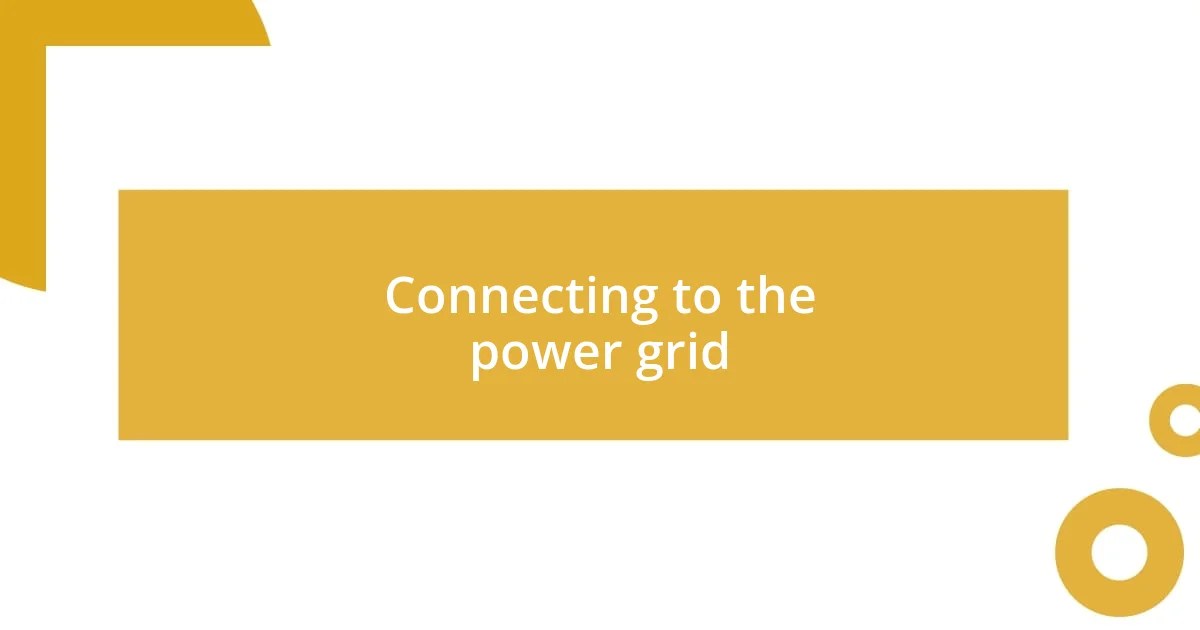Key takeaways:
- Solar energy can significantly reduce electricity bills and enhance sustainability by decreasing reliance on fossil fuels.
- Careful evaluation of solar systems, including assessing power needs and panel types, is crucial for making informed choices.
- Regular maintenance and monitoring of the solar energy system ensure optimal performance and maximize savings over time.

Overview of solar energy benefits
One of the most significant benefits of solar energy is its ability to reduce electricity bills. I remember the first time I saw my energy bill drop dramatically after installing solar panels; it felt almost surreal. It’s not just about saving money, though—there’s a real thrill in knowing you’re generating your own power.
On a deeper level, embracing solar energy means taking a step towards sustainability. I find immense satisfaction in knowing that I’m contributing to a cleaner environment for future generations. Have you ever thought about the air quality in your community? By harnessing the power of the sun, we’re reducing our reliance on fossil fuels, which is a win for both the planet and our health.
Another benefit that often goes unmentioned is energy independence. I remember feeling empowered when I realized that I wasn’t just a consumer of energy anymore; I was part of the solution. Isn’t it liberating to think that during outages or energy crises, I have my own source of power? The sense of security that comes with it is invaluable.

Evaluating solar energy systems
When evaluating solar energy systems, it’s essential to assess your power needs accurately. In my case, I spent time analyzing my past energy bills to understand my consumption patterns. It wasn’t just about picking a system; it felt like piecing together a puzzle that would define my energy future.
Here’s what I discovered as important factors in my evaluation process:
- System Size: Calculate the wattage you need based on your current usage. More power means higher initial costs, but potential savings.
- Type of Panels: I found that there are primarily monocrystalline and polycrystalline panels. Monocrystalline panels are more efficient but often come at a premium price.
- Inverter Quality: A good inverter can significantly affect the efficiency of your system, so I read several reviews to determine the best options.
- Local Climate: Understanding how much sunlight your area gets will impact the performance of your solar system. I learned that my location received ample sunny days, which boosted my enthusiasm.
- Installation: I had to consider whether to DIY or hire professionals. Initially, I thought I could manage it myself but ultimately hired experts to ensure safety and efficiency.
Navigating these considerations may seem daunting, but breaking them down helps you see the bigger picture. Each piece of information felt like a stepping stone guiding me toward the best system for my home.

Choosing the right solar panels
Choosing the right solar panels requires careful consideration of specific factors. I remember standing in my backyard, holding brochures for different panels, feeling a mix of excitement and uncertainty. Ultimately, I focused on efficiency ratings and warranty periods. Higher efficiency panels can generate more electricity in smaller spaces, which was crucial for my limited roof area.
It’s also vital to weigh upfront costs against long-term savings. Once, I calculated the payback period for both types of panels I was considering. Was it worth spending extra on monocrystalline panels? After some soul-searching, I decided yes, because I believed those panels would give me more energy output over time, making my investment worthwhile.
When comparing panels, I often found myself returning to reviews and recommendations from other users. Gathering insights from real-life experiences made me feel more confident. A friend shared how his panels had performed over the years, and it made me realize the importance of selecting a reputable brand. After all, I wanted my panels to work efficiently for decades to come.
| Type of Panel | Efficiency | Cost | Warranty |
|---|---|---|---|
| Monocrystalline | 15-22% | $$$ | 25 years |
| Polycrystalline | 13-16% | $$ | 10-25 years |
| Thin-Film | 10-12% | $ | 10-15 years |

Installing solar panels at home
When I finally decided to install solar panels, I realized that the installation process was more than just nailing down some panels. It felt like transforming my home into a mini power plant. As I watched the professionals climb up on my roof, I couldn’t help but feel a thrill of anticipation—would this really cut my energy bills in half?
I went for a system that suited my home’s architecture and the local building codes, which added another layer of complexity. Did you know that not every roof can support solar panels due to factors like pitch and orientation? That discovery hit me hard, as I initially thought my roof was perfect for the installation. Luckily, after consulting with the installation team, we found an optimal angle that maximized sunlight exposure.
On installation day, the excitement built, and I paced back and forth, watching as the crew carefully placed each panel. I remember thinking about all the energy my family would save and how great it felt to invest in a sustainable future. But here’s something I didn’t expect: once the panels were installed, more than just my energy costs changed. I felt a sense of accomplishment, knowing I’d taken a real step towards contributing to a cleaner environment. It was a proud moment I’ll cherish forever!

Connecting to the power grid
Connecting to the power grid was a crucial step in bringing my solar project to life. I remember standing there, looking at the utility meter, wondering how this transformation would change my daily life. It was all about harnessing the sun’s energy while ensuring that I still had access to the grid when I needed it most.
Navigating the technicalities of the grid connection process felt daunting. I had to fill out various forms, often getting lost in the jargon, and coordinate with my local utility provider. Did I fully grasp how net metering worked? I was nervous at first, but once I understood that any surplus energy I produced could be fed back into the grid for credits on my bill, my anxiety dissipated. This dynamic made the whole process seem far more beneficial than I had initially thought.
The day the connection was made was unforgettable. I watched as the technician sealed the final connections and flipped the switch. My initial hesitation transformed into a sense of pride and relief. Suddenly, every time the sun shone, I knew my home was generating power and contributing to a greener world. There’s something incredibly satisfying about seeing your energy production meter spin in reverse, a tangible reminder of my commitment to sustainability.

Maintaining your solar energy system
Maintaining your solar energy system is crucial to ensure it operates efficiently and continues to reduce your energy costs. I remember the first time I climbed onto my roof to inspect the panels; the gleam of sunlight reflecting off them was mesmerizing. Regular check-ups, including cleaning the panels of dirt and debris, can make a noticeable difference in their performance, and I realized that a little effort goes a long way.
One of the things I initially overlooked was the importance of monitoring the system’s output. After all, when I saw my energy production drop unexpectedly, my heart sank. I recommend using monitoring tools that give you real-time analytics; this way, you can easily catch any issues early on. It’s like having a health check-up for your solar energy system—I think of it as my own energy “fit test.”
Additionally, I learned that it’s wise to schedule professional maintenance annually. I used to worry about dragging someone up to my roof, but once I felt that relief knowing a technician was checking things over, I understood how crucial their expertise is. They can identify problems that I would have missed, and I take comfort in the fact that this professional touch ensures my solar setup stays in optimal condition for years to come. Wouldn’t you want that peace of mind, too?

Calculating savings from solar energy
Calculating the savings from my solar energy system was one of the most rewarding parts of my journey. I remember sitting down with a calculator, when I first crunched the numbers and realized my monthly power bills were a fraction of what they used to be. It felt like unlocking a treasure chest; every dollar saved added up quickly, especially when I factored in the credits I received from feeding excess energy back to the grid.
To get a comprehensive picture, I looked at my initial investment against my reduced energy costs. I found it helpful to create a simple spreadsheet that tracked my solar output and electricity costs month by month. Watching that downward trend was exhilarating. Some people might ask, “Is it really worth it?” From my experience, the first year’s savings more than justified my investment, and I could already envision the long-term financial benefits ahead.
I also discovered that there are often tax incentives and rebates for installing solar panels, which can significantly enhance savings. When I submitted the necessary paperwork for those credits, I couldn’t help but feel a surge of satisfaction, knowing I was not just saving money but also making a positive impact. Isn’t it amazing how making a sustainable choice can also lead to financial freedom? Every dollar I saved felt like a step toward a brighter, more environmentally friendly future.















